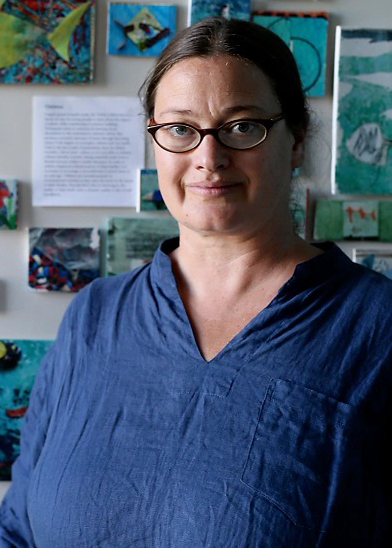Meet The Team

Lee Lee
Working at intersections of visual arts, technology, movement and ecology, I’m an artist who has been building creative frameworks of community centered restoration. Both my son and father play significant roles in gardens that we most recently cultivated in Blue Hill, Maine. Across 4 years, we grew native foodways and medicine paths from seed, and initiated a series of creative engagements with public access lands. Working with the Blue Hill Heritage Trust, Open Air Arts Initiative, Halcyon Grange and the Penobscot Alewife Committee (amongst others), we are developing ways of using technology to embody the landscape and guide community members in acts of restoration and tending shared lands. Another aspect of land-oriented work in Maine is considering plant mobilities and how colonial medicine chests have altered northeastern landscapes. I’m looking forward to a residency at Watershed Arts in Ireland to explore relationships with some of these plants in their native landscape. This continues an investigation into the Irish relationship with the landscape that started with Hybrid, wherein Denver artist, Rian Kerrane initiated an exchange between Irish and Colorado artists that included residency exhibitions both at Redline in Denver and the Letterkenny Cultural Center in Ireland.
Exploring how colonial relationships persist today, my work also looks at impacts on the landscape and indigenous populations in the former French colonies of Acadia and Haiti. I’ve been working in collaboration with the Atis Rezistanz to figure out ways to augment food forests along the Grand Rue in central Port-Au-Prince, Haiti as part of the Ghetto Biennale over the past 8 years. I’ve recently presented this award-winning work to the Society of Conservation Biologists in Kigali, Rwanda, at the Ecolinguisitcs conference in Liverpool, England, the Nature of Cities festival, and the project was featured in the article, Contested creativities in Haiti’s Ghetto Biennale written by Peter Haffner for Art in the Public Sphere.
Last year my son, Thatcher Gray and I returned to Denver, where we were born and raised, and we are happy to be back in the more familiar Rocky Mountain Steppe ecology zone. We’re currently exploring ways that desert agriculture can augment local ecologies through a research-oriented approach of investigating the Acequias of the southwest. This summer we will attend an artist residency at Green Olive Arts in Tetuoan, Morocco to learn how Riffian farmers influenced Spanish to carry out this practice in the northern reaches of their settlements here in the west. We hope to initiate conversations between creatives & land practitioners since the Rif mountains have a similar ecology to the Rockies. We also look forward to tracing historical ties between geographies to better understand why the New Mexico Acequia Association is actively promoting this traditional practice as a time-tested solution to climate change.
Slow Food philosophy has played a significant role in how we approach creative activism around the shared table, and I’ve attended the Terra Madre festival as a delegate several times. Our garden collaborations have been featured in Eco Source Magazine, edible Santa Fe and received an award for landscape design by Maine Homes Magazine. Our garden systems in Taos were featured in ISEA2012: Machine Wilderness: RE-imagining art, technology and nature, and by LEAP (Land Experience and Art of Place) during their Neo Rio ¡Pollinate! event. Cultivating the land and preparing nourishment are essential parts of our creative process and we are looking forward to helping the Slow Food movement thrive across Denver’s landscape.
www.lee-lee.com & www.virtualvoices.org
